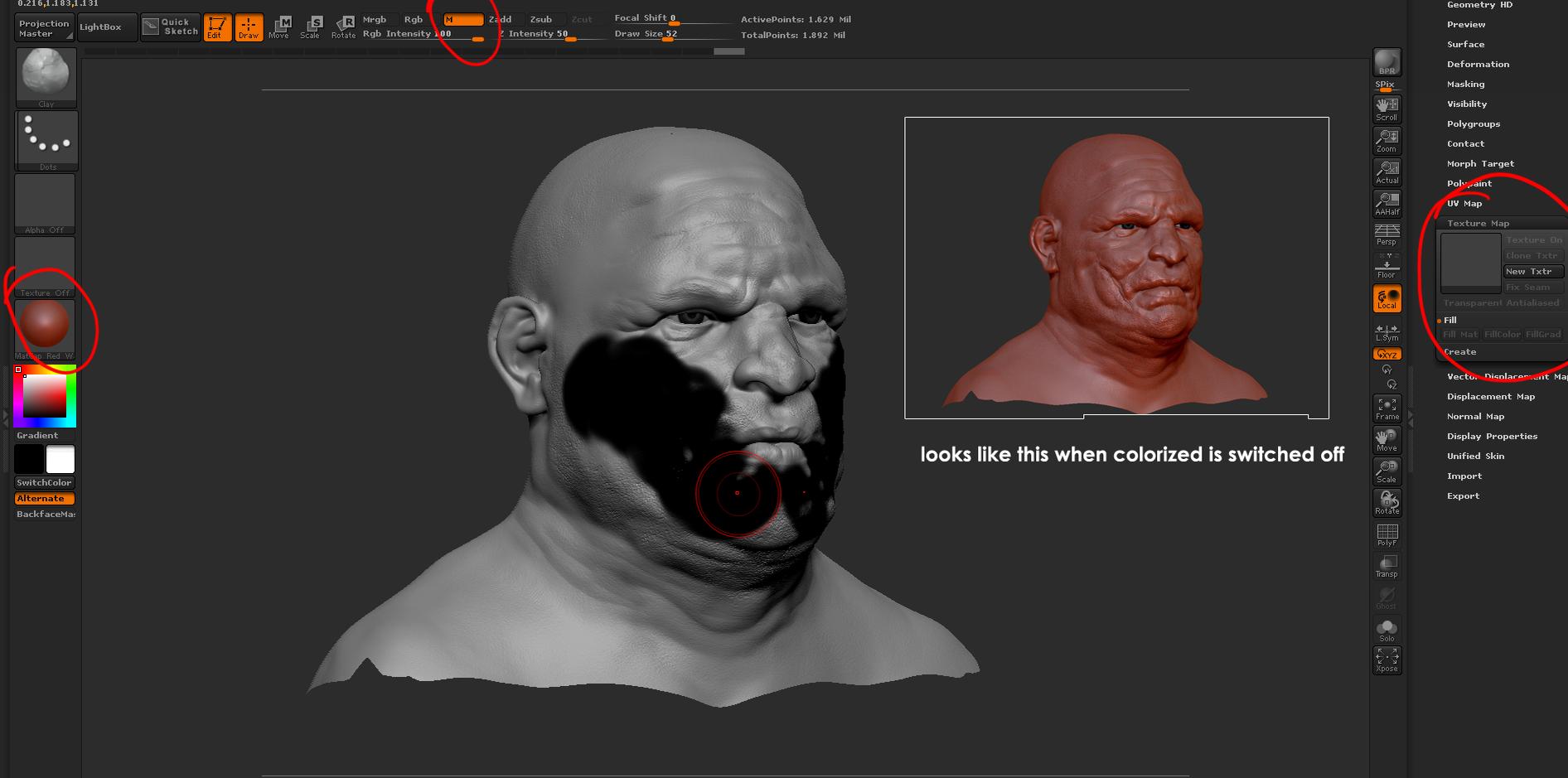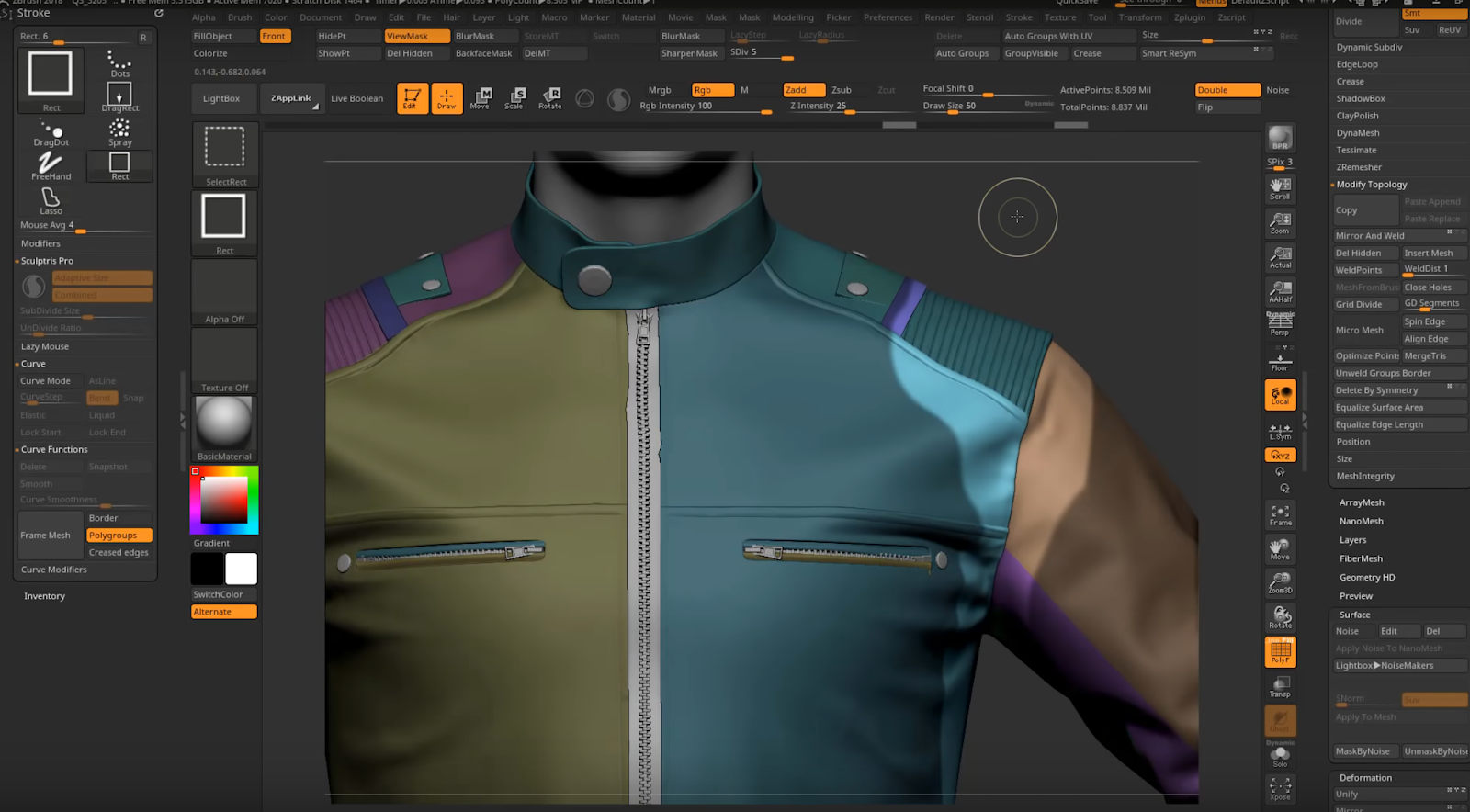

If your model does not have UV, you need to press Tool>Texture>AUV to create it. Note: If you want to continue drawing colors, just simply press Texture>Texture Off to continue drawing your colors when you want to convert the newly drawn colors to texture maps again, just repeat the above steps. If it is 2048x2048, you can follow the steps below: set the texture width to 2048 set the texture height to 2048, and press the Texture>New Texture button.Īt this time, there will be a texture map covering the color you made earlier, don't worry, they are still there. Step 6: Convert polygon drawing to texture map to create the texture size you want.
Colorize button zbrush 4 skin#
Set the color sampling panel to a light skin color, or even a color close to white select Alpha: Brush07 select the stroke as Colorized Spray set the RGB Intensity to about 10 paint the color on the model, try to use this The color "washes" the entire model, don't try to cover some of the transparent spots. Step 5 Complete the unified whole Once your model has a good variety of colors, you will want to use a light skin color to unify the color of the entire model. Whether it is a combination of warm or cool colors, you can follow the steps below:ĭrag the color to the color sampling panel to increase the brightness as a highlight.ĭrag the color to the color sampling panel to increase the saturation of the color.ĭrag the color of a large area to the color sampling panel to adjust the color of yellow, red or purple. If you analyze the paintings of some masters, you will find that the forehead of the human head is usually light yellow, the lips are red and the ears are slightly purple. Step 4: Establish color regions Once your model is colored, you must experiment to create different color regions. Start drawing on your model, as shown in the figure below (right). Set the color to a color close to the skin Draw Size is 150 Tool>Geometry>SDiv of the model is the highest level Brush is Std. Step 3: Cover the surface of the model and select the stroke as Colorized Spray. Press the RGb button in the top menu and close the ZAdd button, as shown in the figure below (left).

Step 2: Set the model to prepare for polygon drawing. Beginners can use it as a reference to expand their ideas.Īt the beginning of the step, select your model from the tool panel, and place the model on the canvas, press the Edit button or the T key select the MatCap Skin05 material from the material panel. Real drawing requires learners to have a certain foundation. Select Mrgb to Ensure a Material and Color Fill. Click on the Material icon to open the material picker.

How do you color SubTools in ZBrush Select a given SubTool in the Tool > SubTool palette.
Colorize button zbrush 4 how to#
This tutorial shows you how to draw a model. Additionally, you can press the C key at any time, and ZBrush will pick the canvas or interface color underneath the cursor.

After changing settings the new configuration should be stored by pressing the Store Config button in the Config sub-palette or Shift+Ctrl+i on the keyboard.Using ZBrush® can quickly sculpt a character's head model. The Preferences palette contains settings for many ZBrush features so that you can set them to suit your working requirements. You can adjust render settings in the Render palette. To show floor shadows, make sure the Floor button is also on. Rendering a Picture To render a high-quality picture of your model, press the BPR button at the top right side of the interface. The Rotate With Object option means that the background and model will rotate together. Select the image yu want to use from the pop-up, or press the Import button to select an image file from disk. To load the Background image, click on the image thumbnail in the Light > Background sub-palette. 2015 How do I add a background image in Zbrush? Now go to the Document menu and click on Back to set the colour, then move the Range slider all the way down to 0 to remove the gradient.1 avr. Clicking this button will save your preferences as well as the UI colours. Save custom UI and shortcuts To save the UI changes, simply go to Preferences, and under the Config sub-palette, click on Save UI.


 0 kommentar(er)
0 kommentar(er)
